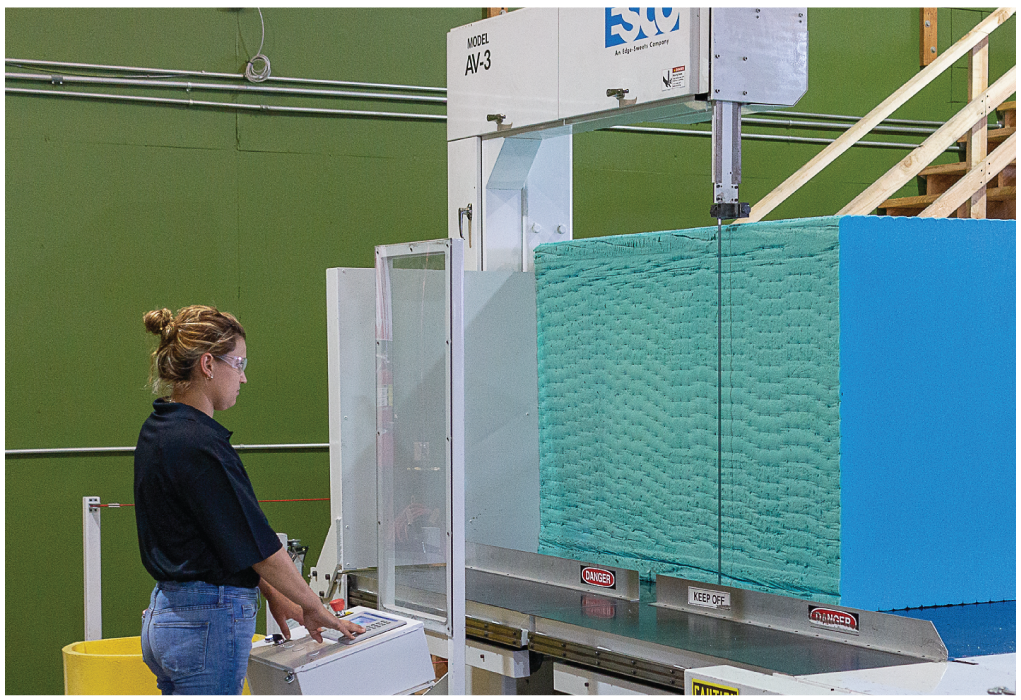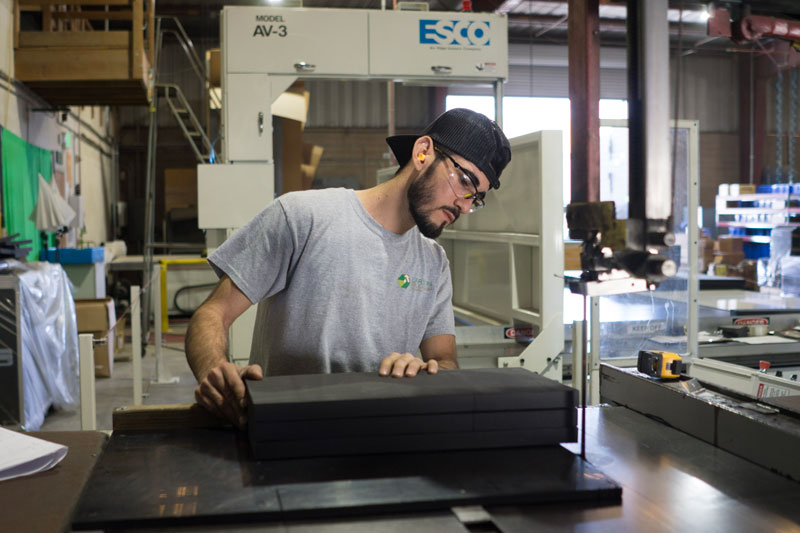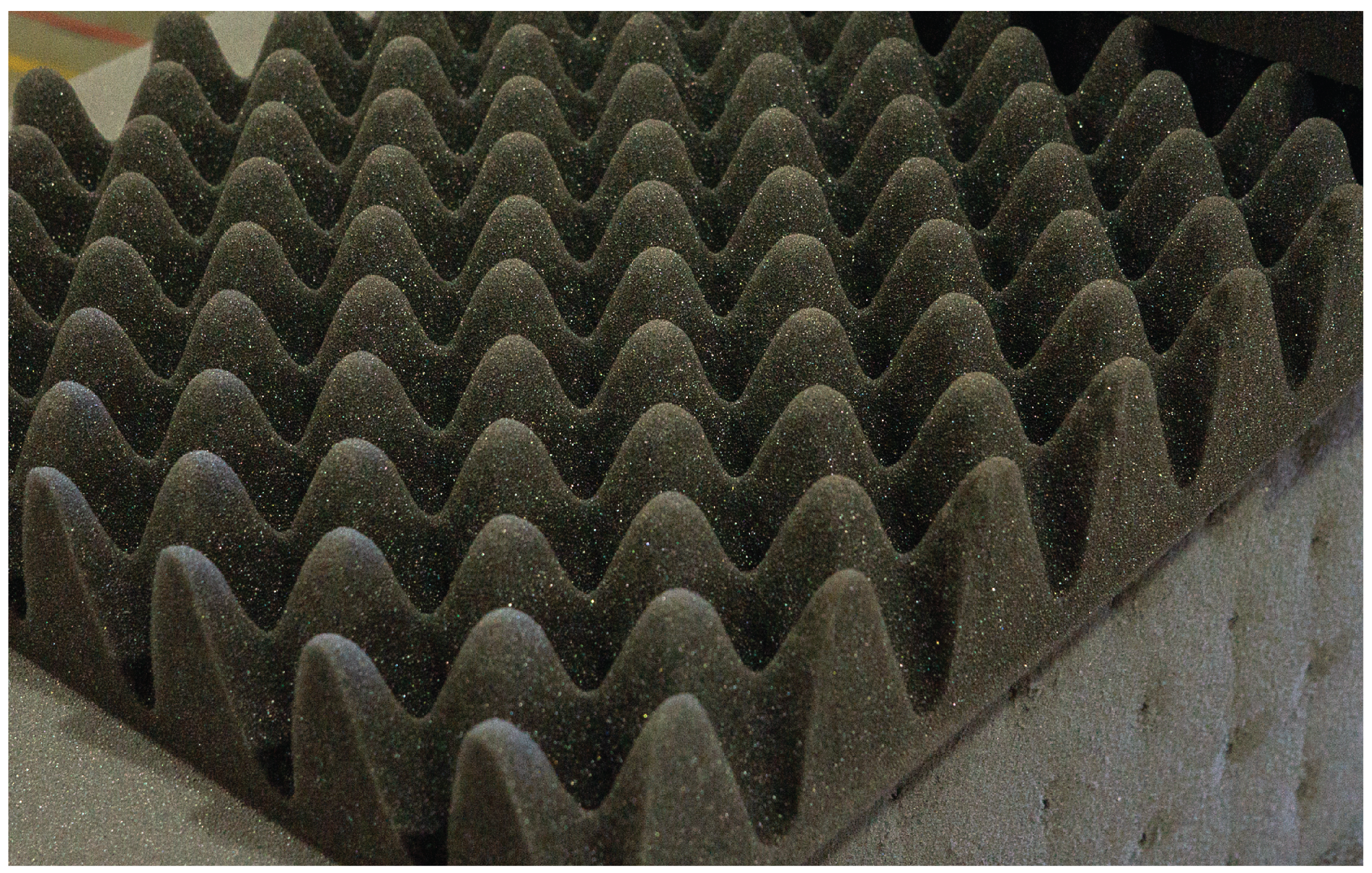Foam Products, Assemblies and the Equipment Used to Make It
11 December 2020

Foam is manufactured in buns (large blocks) or planks and may have to be cut or skived (trimmed or split to exact thicknesses) into sheets before it can be worked with. A foam packaging product has to then be custom cut and manufactured into smaller parts and often requires some assembly. There are many different fabrication technologies available depending on the shape, quantity, and quality that is required for the application, need for precision, and budget.

Customizing Foam for Different Applications
Most foam manufacturing is provided locally to customers because the creation of a foam packaging product is often a creative, iterative process between the customer, design, and manufacturing—and it is costly to ship as a non-value-added raw material.
Some of the most commonly used form factors of foam for packaging applications:
- Cut-to-size pads or bars
- Convoluted foam
- Cut to shape or cavity cut—Die-cut, dieless cut (flash/CNC knife), water jet, profile/contour cut, or routed
- Heat-welded foam assemblies
- Foam end caps, or top and bottom frames
- Corner protectors/corner blocks
- Adhesive-bonded foam assemblies
- Trays and inserts
- Foam and corrugated combo assemblies
- Floater base/shock pallet cushioning systems
Plain Pads, and Bars
 Plain pads and bars can be used as a single layer inside a rectangular cavity (such as a box, crate or molded case). In addition to protection, they can provide organization, blocking and bracing, and other properties such as thermal insulation. Pads and bars are also used in many crates and crating applications.
Plain pads and bars can be used as a single layer inside a rectangular cavity (such as a box, crate or molded case). In addition to protection, they can provide organization, blocking and bracing, and other properties such as thermal insulation. Pads and bars are also used in many crates and crating applications.
Blocking/Band Saw/Slitter

Bandsaws of different types are used to break down PU buns, cut sheets to specifications, and cut parts such as bars in crates.
Skiver

Foam comes in sheets or planks of a standard thickness. Skiving is the process of cutting foam to a specific thickness required by our customers. We can skive virtually any material to precise thickness.

Convoluted Foam/Convoluter
Convoluted foam sheets, also known as “egg crate” are made by splitting a mechanically deformed foam sheet into two sheets that have peaks and valleys and nest together. The convoluter pushes the foam through rotating rollers with fingered pins, stretching and distorting the foam. When the blade passes through the distorted material it cuts a
straight path, and when the foam rebounds back to its original sheet size, the egg crate pattern is the result.

A single sheet of convoluted foam is effective for packaging several items of different sizes together. A sheet of convoluted foam may be used on the lid of an enclosure such as a hard case because it will put positive pressure and hold down force on the item, yet will give when it is closed and not put too much pressure on the item or seal.
Work with your packaging partner to select the right foam for your application.
Selecting a packaging partner with knowledge and experience about the performance properties of various foams can improve your packaging. At Larson Packaging Company our design team can help you identify the correct type, amount and density of foam to ensure that your product will always arrive safely.
